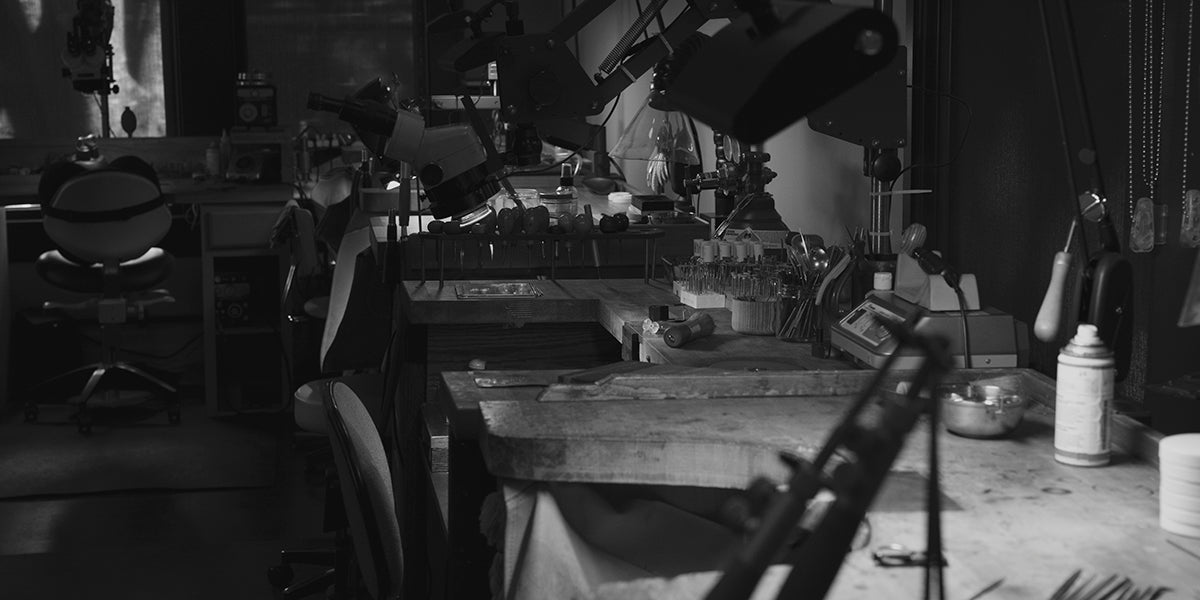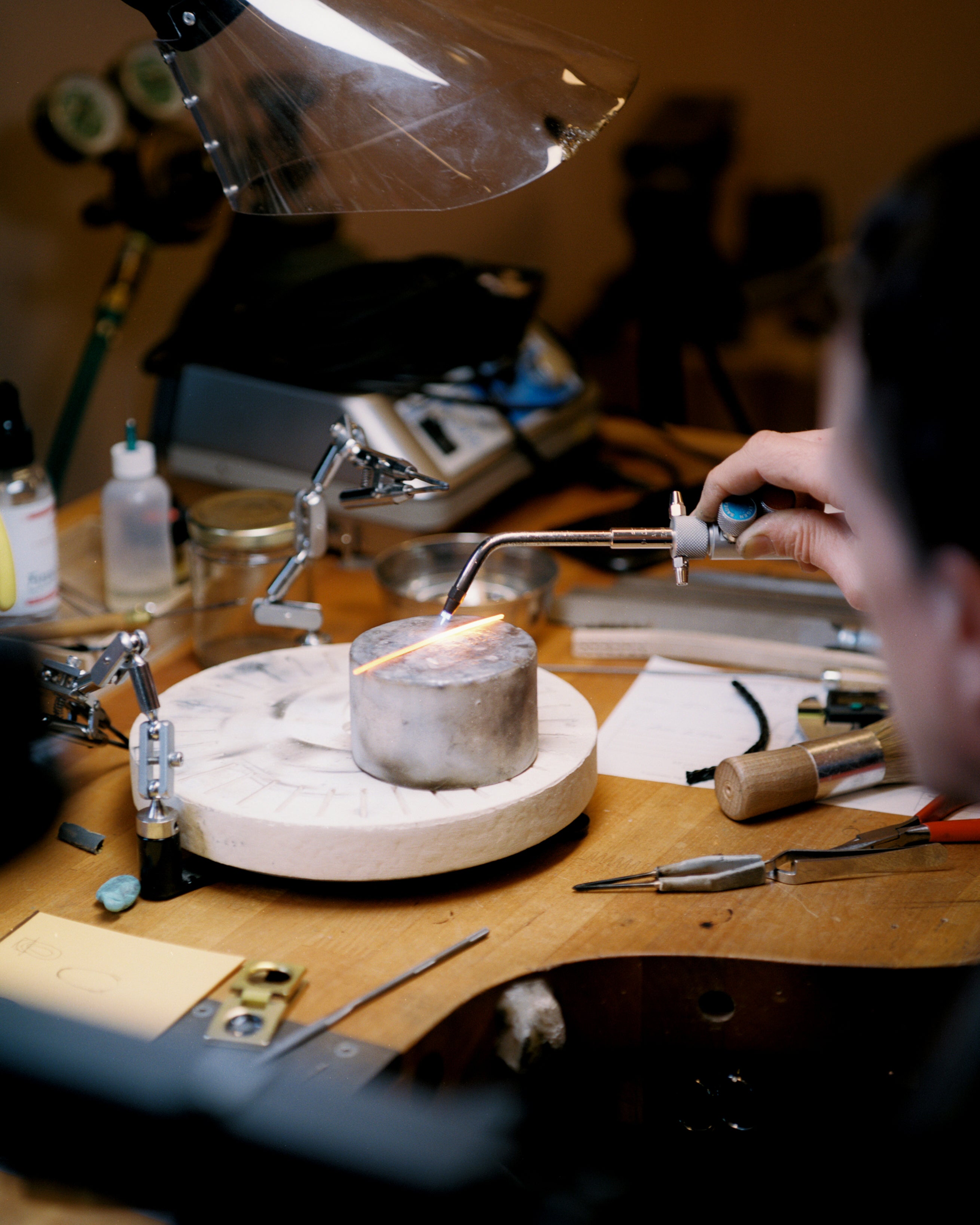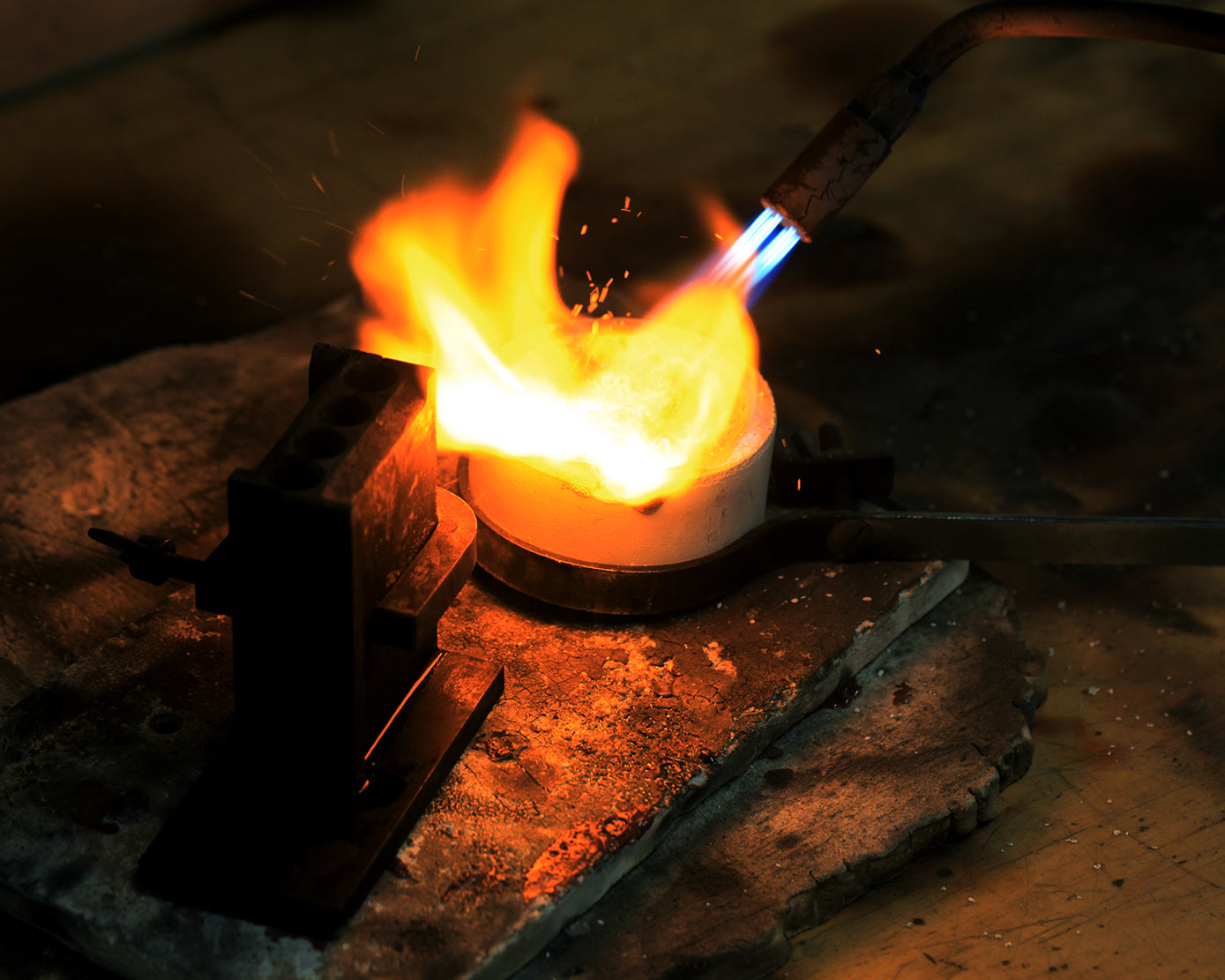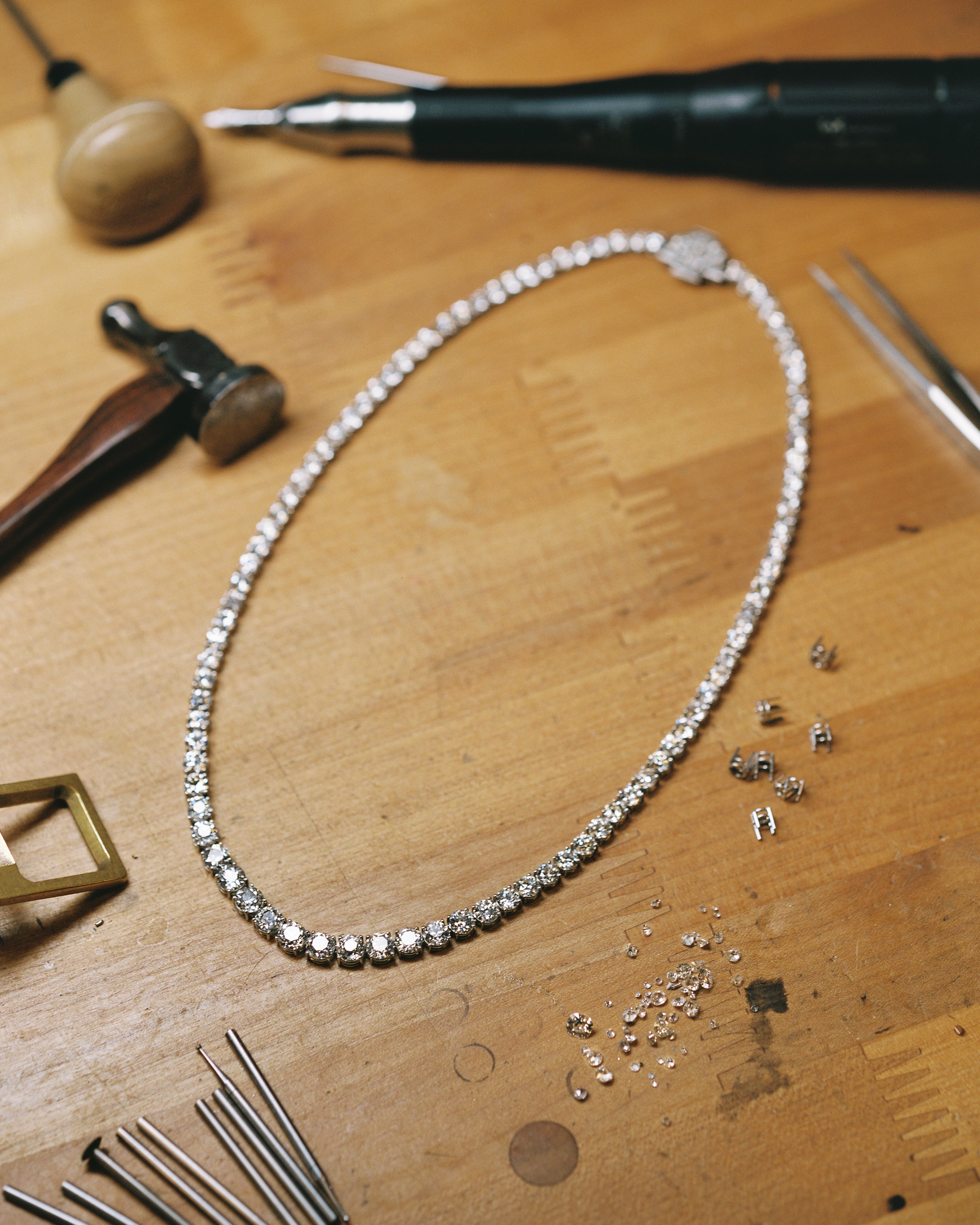Hand fabrication has been all but abandoned for modern production and CAD manufacturing – the craftsmanship of the individual jeweler is a rarity.
All of our jewels are created without the use of casting or computer design.
The required training takes many years of dedicated practice. Our jewelers have trained with mentors, attended advanced workshops, graduated from collegiate metalsmithing programs, and collectively handled thousands of antique pieces. We allow our jewelers the opportunity to use all of their existing knowledge and push them to explore new techniques with materials and ideas that stretch their creativity.


Antique jewelry is highly regarded for its craftsmanship – what often separates it from modern jewelry is the process used to create it.
We follow these same steps to make our jewels, giving them the same feel as antiques with an updated look.


All gold alloys are not the same.
All of our golds are blended in-house, allowing us complete control of coloring and hardness.
We omit ingredients such as zinc and silicon, these are present in more commercially available modern gold alloys and cause dilution in color and lower the melting temperature of the gold.


Once our metals are blended, bars are made by pouring the molten metal into steel ingot molds. By working the metal with forging techniques, the metal is strengthened and shaped.
Ultimately, all of our parts are formed using these hardened bars of gold or platinum. This process is laborious but allows us to refine the details of each piece, allowing the most intricate work to remain strong enough to withstand modern wear.
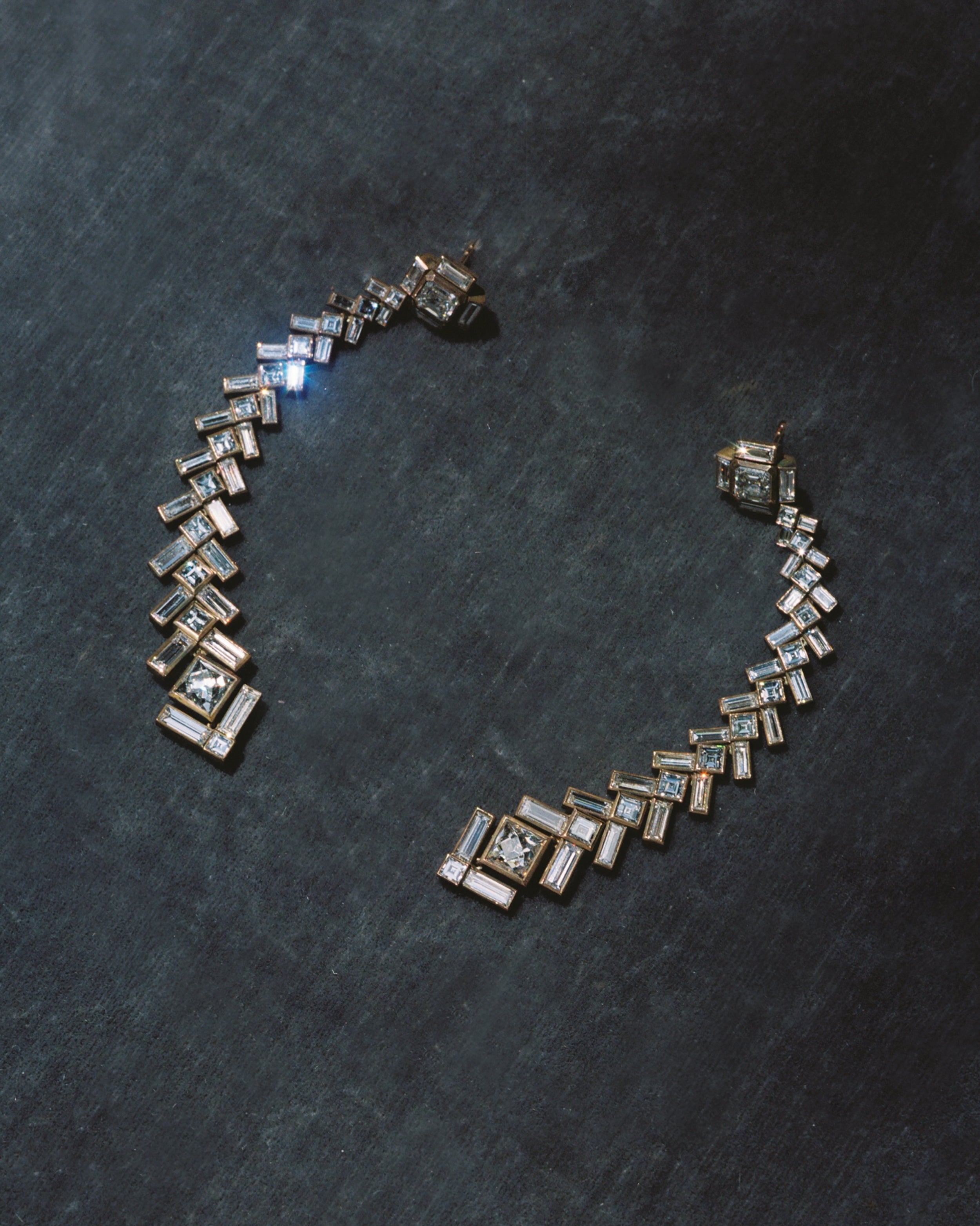

Hardening the metal using forging techniques enables the designs to be executed with less metal, emphasizing the stones and reducing the visual weight of the setting.
Total control over every millimeter allows the unusual proportions of antique gemstones to be properly framed. Every form is bent to fit the intended wearer.
While computer-aided design (CAD-CAM) and wax casting techniques have found useful applications in the jewelry trade for production, they do not achieve the same results as traditional fabrication.
Please reach out with any questions about our process.

This example of an unusual restoration shows many parts as they are being made to turn a collection of antique diamond stars into a suite of wearable jewels.
Shown in the picture are fittings for earring and pendant fittings allowing the owner to wear the stars in a number of different ways. A vintage tap and die set allowed us to match the threads on these nineteenth century jewels and will breathe new light into a stagnant jewel.
Restoration is done if necessary on pieces we curate for the store, we do not offer antique restorations.

